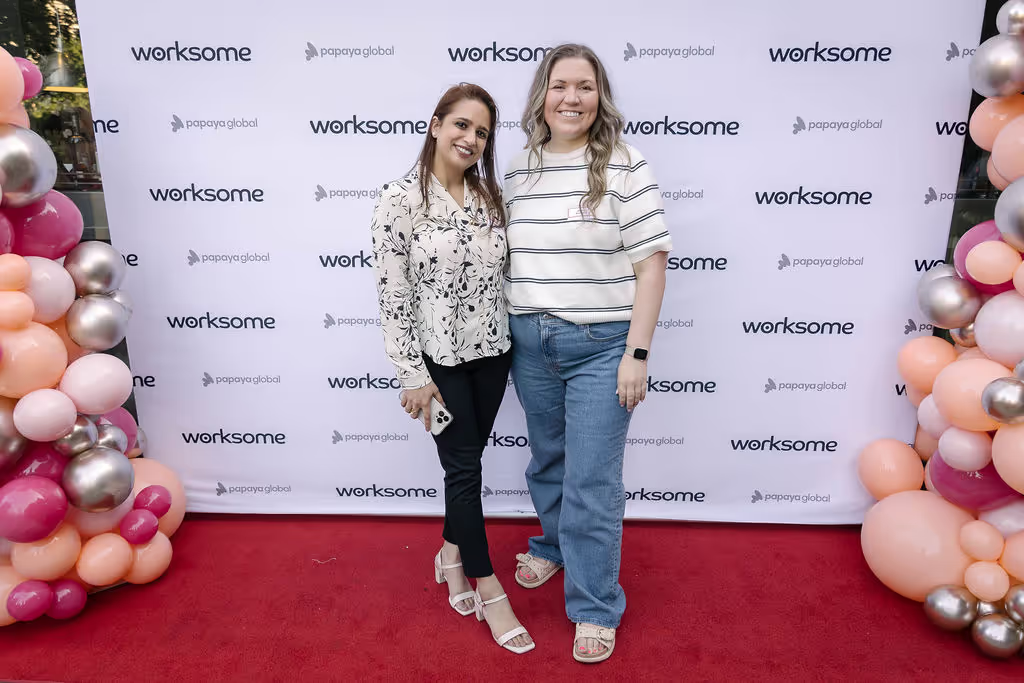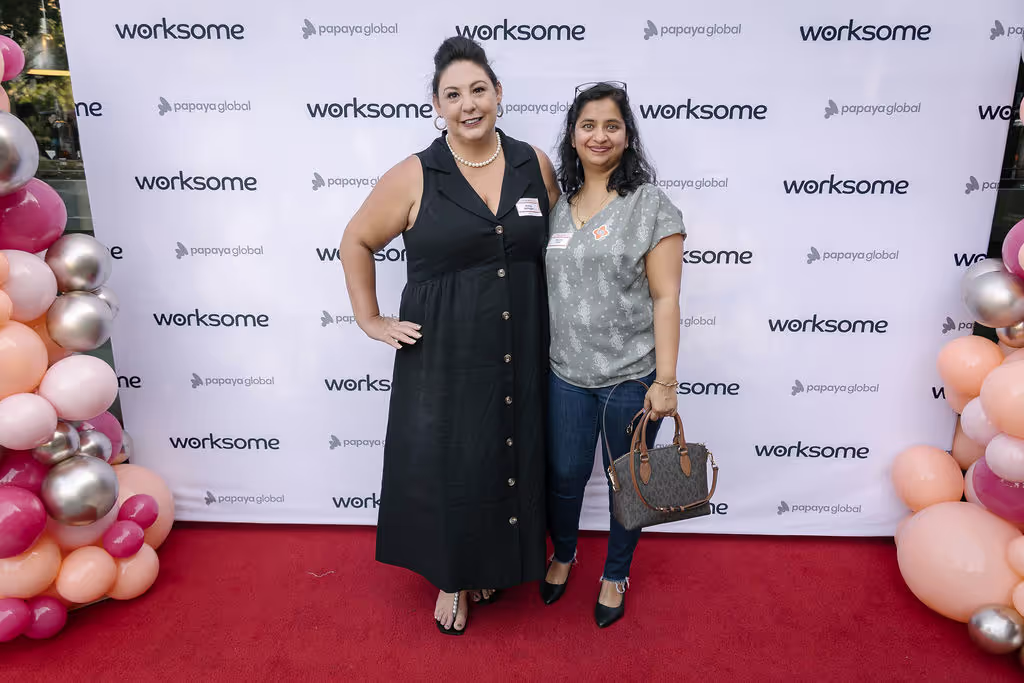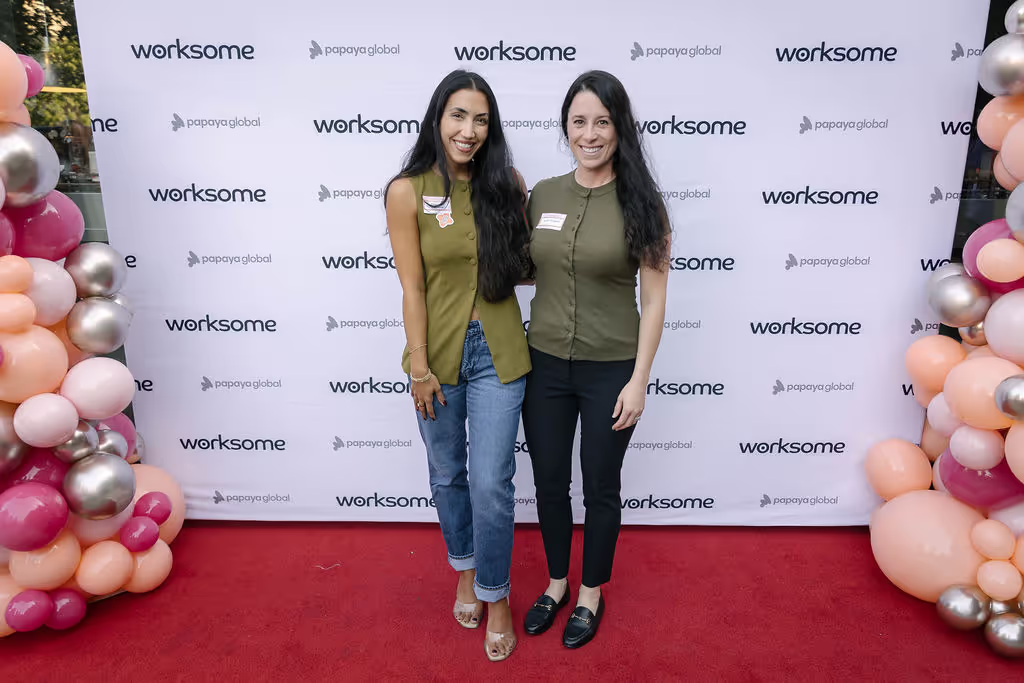Even before the pandemic, letting employees split their time between working from home and in the office was becoming more popular. It expanded your hiring pool, giving your workforce much more flexibility while building a better work-life balance for your employees.
Millennials also prefer the freedom and flexibility that goes with non-traditional employment. According to the World Economic Forum, "by the year 2025, 75% of the global workforce will be made up of millennials - which means this group will occupy the majority of leadership roles over the coming decade. They will be responsible for making important decisions that affect workplace cultures and people's lives."
Whether they work from home 100% of the time or come into the office a few days a week, the gig economy demands a more flexible work environment. So, if you manage them as a part of a blended team, you must adapt. The good news is that business agility is vital, and agile talent is available.
According to the Gartner 2021 Digital Worker Experience Survey, 43% of respondents said that flexibility in working hours helped them achieve greater productivity, and 30% of respondents said that less or no time commuting enabled them to be more productive.
What exactly does it mean to work hybrid?
Hybrid work schedules combine on-premise and remote work models to create a unique and more flexible environment where team members alternate time in the office with a bit of remote work. It can also mean hiring remote or freelance workers alongside your full-time, in-office employees. Hybrid work is designing the work experience for and around workers, regardless of location, who split time between in-office, coworking spaces, and at-home.
The greatest benefit of blending temporary talent into the full-time environment is that it reduces costs by reducing your office space, office materials, and overall overhead costs.
"46% of people would be willing to take a pay cut of up to 5% to keep working from home part of the time after the pandemic."
-Owl Labs
According to the Bureau of Labor Statistics, a shocking 40% of the current workforce is contingent workers, and indeed, some workers take contingent work out of necessity rather than choice. Still, the sharp rise in this figure over the past decade can be attributed to several factors, including the past economic recessions, changes in smart technology with tools like Worksome, and the Affordable Care Act, which made insurance available for those without full-time jobs.
Let Worksome help you drive disruptive innovation instead of just sustaining. Sign up for a free demo today.
How to manage a blended workforce?
Creating a solid foundation of trust and empowering all of your employees is paramount to managing a blended workforce. Look for ways to keep your teams accountable without micromanaging. One of the best ways to do it is by creating time blocks for check-ins and timelines for project due dates.
Managing a blended workforce with full-time and contingent workers isn't as hard when tools like Worksome exist.
Every company wants high employee engagement. But what if a significant portion of your employee base is non-employee agile talent? Does employee engagement still matter?
We certainly think so, and according to Forbes, thousands of talented professionals hold temporary roles or freelancer positions that are customer-facing or high-impact, and engaged "employees" lead to higher customer satisfaction and work output.
"69% of employees say they would work harder if they felt their efforts were better recognized."
-Hubspot
A recent Gallup study found that "36% of U.S. employees are engaged in their work and workplace. Globally, 20% of employees are engaged at work," but "the percentage of actively disengaged employees is up slightly in the U.S., from 14% in 2020 to 15%... Actively disengaged employees report miserable work experiences and are generally poorly managed."
Remember that temporary employees want to make a difference just like your full-time staff, so engagement will be high when an employee knows they are meeting and exceeding goals and impacting company results.
Recognition motivates people and gives them a sense of pride and accomplishment in their work.
"71% of executives say that employee engagement is critical to their companies success."
-Haiilo
Organize your team's workload
Please pay special attention to your team's workload because it's easier to lose track of who is over or under-allocated when you don't see them daily. To ensure no one's over or under-worked, we suggest you tap into a robust project management system and pair a contingent worker with a full-timer if you can do so - Like a buddy system for accountability.
Hiring methods for a blended workforce
Finding quality talent is an excellent place to start, and keeping them engaged certainly helps build toward long-term retention and engaged workers. Worksome provides a freelancer marketplace and encourages our clients to invite their own trusted contacts. If you're in the process of sourcing talent, be descriptive and clear about the job.
One of the biggest dissatisfiers for temporary or contract employees is their skills and knowledge are not matched well to the role. However, through the job description criteria, this hiccup can be fixed. Be sure to give temporary employees the big picture and help them connect their work to the team's goals.
Prepare your staff and human resources dept. to work with the contingent workforce
Inform your staff about the team's new members, their background, and what they'll be expected to do. Speaking of preparation, provide a solid orientation for your temporary employees, get them all the relevant passwords, access, and tools, and make those initial introductions to the broader team. The more comfortable they feel, the more productive and engaged they will be.
Blended work schedules are the future
Meeting formats have seen the most significant overhaul when merging schedules for a blended workforce, but a call on Zoom, Google Hangouts, Skype, or Microsoft teams has quickly become the norm.
Remember that reciprocity and accountability happen when you have met someone, even virtually. So, it's an essential component of blending your temporary talent into the full-time work environment.
55% of employees want to work from home at least three days per week moving forward — meanwhile, 43% of business executives want to be partially or fully back in the office as soon as possible
-PWC
What are the advantages of a blended workforce?
The blended workforce helps companies scale operations up or down as needed and can reduce the cost of physical office space. The advantage lies in the ability to bring in highly specialized skills when needed without having to offer traditional employment contracts.
"The top five industries that expect remote work to continue after the pandemic are: marketing and advertising (75%), information technology (71%), art and design (69%), media and publishing (66%), and accounting and finance (61%)."
-Payscale
Should a company implement a blended workforce?
A blended workforce can help an organization maintain a competitive advantage by accessing various skilled 1099 workers when needed. It allows organizations to manage a mix of consultants, freelancers, contractors, and temporary employees without a long-term commitment. This structure can benefit an organization by allowing greater workforce flexibility and visibility so that when needs change at various times and during different stages of business operations, staffing levels can adjust accordingly.
Firms can access top skills internationally when sourcing staff from a blended workforce. This staffing method also helps ignite a sense of competition among workers, which can be an advantage for attracting the best talent.
Rewards of a blended workforce - Diversity, inclusion, innovation & a fresh perspective
A blended team allows more diversity, often resulting in better, more innovative outcomes. That injection of a fresh take on things nicely complements the stability and knowledge that your more traditional employees already provide. At its best, this type of mix can be better than the sum of its parts.
"58% of remote workers are women." -GitLab
Introducing fresh eyes with different experiences and skills can help teams break through challenges that have held up their progress. Working closely with skilled freelancers can also strengthen permanent employees' skill sets.
There is power in embracing an outsider's perspective.
Furthermore, regarding diversity and inclusion, "employees with disabilities were 11% more likely to prefer a hybrid work model than employees without disabilities. More than 70% of men and women expressed strong preferences for hybrid work, but nonbinary employees were 14% more likely to prefer it. LGBTQIA employees were 13% more likely to prefer hybrid work than their heterosexual peers," according to McKinsey & Company.
You might also like to read, “Organizations should take a holistic approach integrating agile talent.”
Finding balance in the gig economy
More organizations recognize the benefits of a blended workforce, which combines the consistency of committed full-time employees with the agility and on-demand skills of non-traditional, contingent staff. Using creative worker management tools like Worksome helps you integrate your blended workforce by providing the tools necessary to contract, compliantly classify, and pay non-employee workers.
"70% of people would consider forfeiting benefits like health insurance or PTO to maintain a remote work model."
-GoodHire
Another benefit for enterprises is the freedom to sever ties easily should the working relationship sour. Letting go of a permanent employee often involves extensive justifications and severance packages and sometimes dampens the morale of the larger team. If a contingent worker isn’t performing well or meeting expectations, it's generally easier to let them go.
"45% of people said they work more while working from home — and 42% said they work the same as they did in the office."
-Buffer
To combine full-time and contingent workers correctly, you must create and manage a system that honors the flexibility and autonomy of remote work schedules while maintaining the orderly and highly communicative nature of traditional workflows.
Find out how we can help you blend skilled agile workers into your existing full-time teams. Sign up for a free demo today.



































